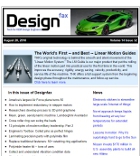 |
| January 07, 2025 | Volume 21 Issue 01 |
Designfax weekly eMagazine
Archives
Partners
Manufacturing Center
Product Spotlight
Modern Applications News
Metalworking Ideas For
Today's Job Shops
Tooling and Production
Strategies for large
metalworking plants
2025 Corvette ZR1: Fastest Corvette ever, now redesigned with a twin turbo
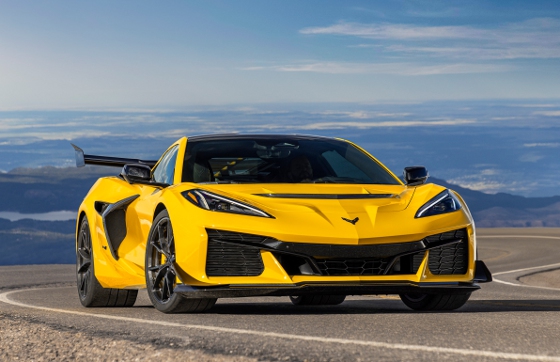
[All images courtesy of Chevrolet]
The 2025 Chevrolet Corvette ZR1 has been redesigned to up the ante as America's dominant supercar, sporting a 5.5L twin-turbocharged DOHC flat-plane crank V8 engine (dubbed the LT7) that puts out 1,064 hp. With its carbon fiber aero package, it looks just as cool standing still as it does racing down the highway, and the return of the split rear window (coupe only) is icing on the cake. It has a GM-estimated top speed of over 215 mph and a GM-estimated quarter-mile time of under 10 sec. ZR1 will be available in coupe and convertible versions.
In an update from this Aug. 2024 article, the ZR1 is officially the fastest Corvette ever as of Dec. 2024 with a 0- to 60-mph time of 2.3 sec with the available ZTK Performance Package and a quarter-mile time of 9.6 sec. The standard ZR1 sprints to 60 mph in 2.5 sec and finishes the quarter mile in 9.7 seconds. And if you're wondering, Chevrolet's E-Ray electric Corvette has a 0-60 time of 2.5 sec.
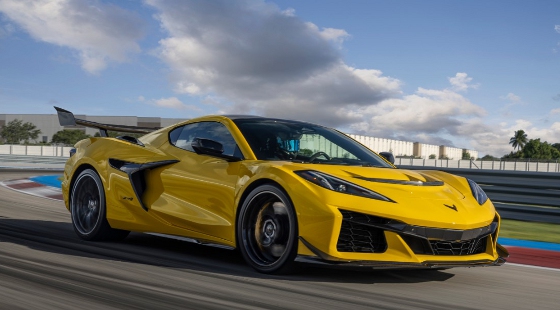
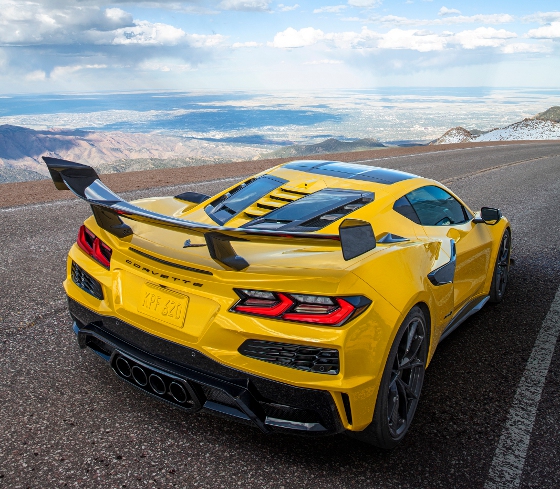
"The team that revolutionized Corvette with a mid-engine architecture took on another challenge: Take ZR1 to the next level," says Scott Bell, vice president, Chevrolet. "Corvette ZR1 is about pushing the envelope with raw power and cutting-edge innovation. From Stingray, to Z06, E-Ray, and now ZR1, the Corvette family continues to elevate with each new iteration -- and challenge the best in the world."
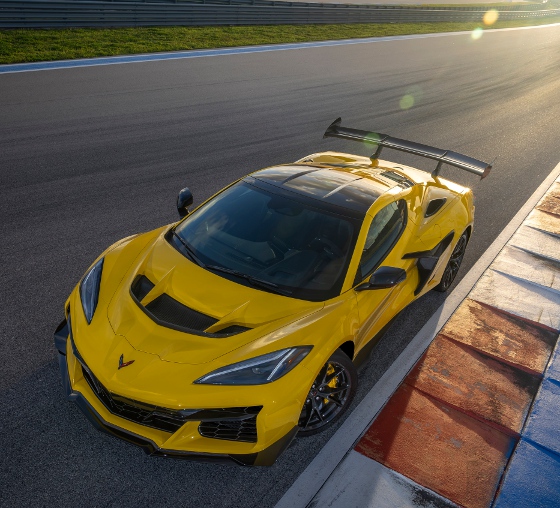
ZR1's 5.5L LT7 twin-turbocharged DOHC V8 engine (producing 828 lb-ft torque at 6,000 RPM) starts with the same architecture as the Z06's LT6, the most powerful naturally aspirated production V8 engine ever, and takes it to the next level with twin turbochargers -- the first time ever for a factory Corvette.
Dubbed the "Small Block Gemini" architecture, the LT6 program was only the beginning as engineers pursued a goal to create massive power, capability, and character from naturally aspirated and turbocharged flat plane crankshaft twin engines. With these goals in mind, engineers did not create an LT6 with turbochargers, but instead changed and optimized virtually every system for a boosted result.
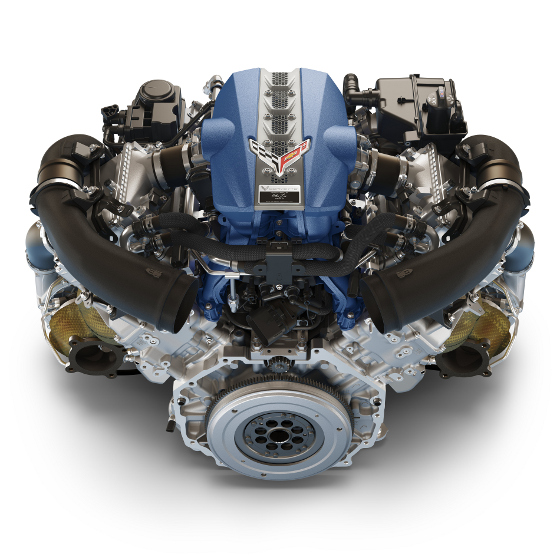
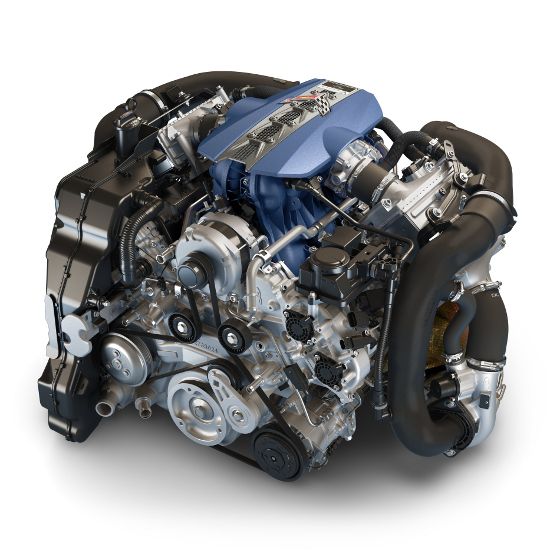
Unique to the 5.5L LT7 twin-turbo V8 are:
- Head castings with unique ports and a larger combustion chamber;
- Valve train timing and lift profile optimized for forced induction with higher exhaust temp enabling exhaust valves;
- A completely new intake system tuned for twin turbochargers;
- A CNC-machined combustion chamber, exhaust, and intake ports specific to the LT7;
- Dual, ported shroud, ball bearing, mono-scroll (76-mm) turbochargers integrated with the exhaust manifold to reduce the volume and distance from the exhaust valve to the turbine wheel for quick response with electronic wastegates; and
- Intelligent anti-lag engine calibration techniques specifically for ZR1 that adapt and react to driving style.
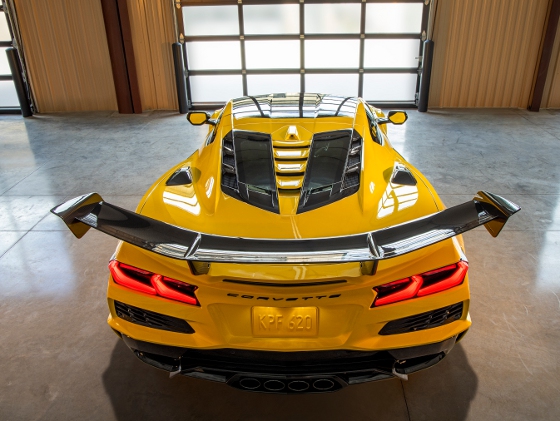
The LT7 engine also builds upon this engine architecture with: added block and head machining to support turbo cooling and oiling, counterweight changes to account for a unique piston, a unique connecting rod for the crank train, and a secondary-port fuel injection system added to deliver the needed additional fuel to support the engine's massive output. The engine will be hand-assembled by the master engine builders at the Performance Build Center, part of the Bowling Green Assembly Plant in Kentucky.
New changes to the Corvette ZR1's eight-speed dual-clutch transmission include:
- Inner and outer input shaft upgrades;
- Increased gear capacity with strength increased via shot peening for all gears;
- Final drive refinements;
- Oil management to support increased vehicle longitudinal and lateral capability; and
- Increased control valves to accommodate the higher required clutch clamp load for LT7.
VIDEO: Corvette ZR1 quick look.
The Corvette ZR1 offers speed on tap like no Corvette before it. Two distinct setups, complete with Magnetic Ride dampers, accomplish this, according to Chevrolet. The standard Corvette ZR1 chassis arrives with a sleeker body with lower drag and a small spoiler with customer-adjustable short and tall wickers. It also includes a standard carbon fiber front splitter, rocker moldings, side intake with integrated brake cooling, and front underwing with stall gurney deflectors. Michelin Pilot Sport 4S tires wrap 20-in. front and 21-in. rear wheels. The standard chassis blends the best of on-road comfort and track capability with this setup. Its carbon fiber aero package creates over 1,200 lb of downforce at top speed.
Aerodynamic and cooling changes include:
- Flow-through hood: Air enters the front grille, flows through the intercooler heat exchanger, and exits the hood to increase front downforce and cool charged air temperatures.
- Carbon fiber side-profile air ducts: Clean, cool air is funneled through ducts, which are cleanly integrated into the signature wishbone bezel behind the cabin doors to cool the rear brakes through an intricately designed system that doesn't impact rear wheel travel; and
- Unique fresh air intake ducts: Carbon fiber inlets located on top of the coupe rear hatch ingest air to cool the turbo compressor inlet air temperatures.
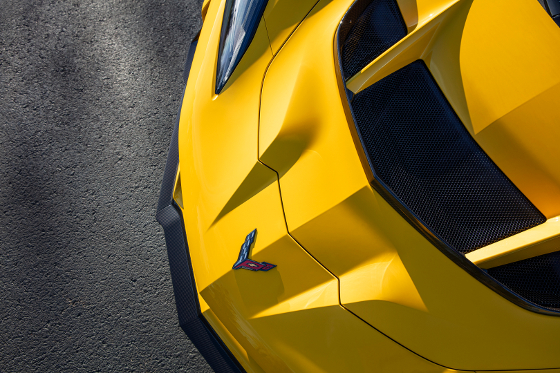
Corvette ZR1's optional ZTK performance package unlocks a true track weapon. Notably, the ZTK package adds an aggressive, high-downforce rear wing, front dive planes, and a tall hood Gurney lip -- all constructed from woven carbon fiber. Underneath, underbody strakes replace the standard front underwing stall Gurney to increase front downforce. The suspension tuning included in the ZTK package incorporates stiffer springs and adds Michelin Pilot Sport Cup 2 R tires.
Amid testing and development, Chevrolet says the ZR1 tackled some the world's most demanding racetracks, including the Nürburgring, Road Atlanta, and Virginia International Raceway. Carbon Aero, featuring all aerodynamic equipment from the ZTK package, is available on the standard ZR1 chassis as well.
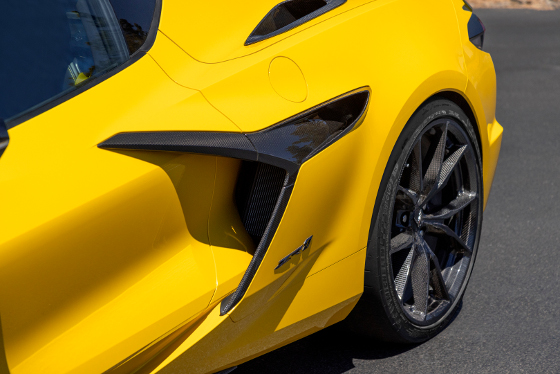
Controlling ZR1's high-performance output is a new brake system. The brake package uses a revolutionary carbon ceramic rotor manufacturing technology to yield increased durability and reduced brake component temperatures. Front rotors measure 15.7 in. (400 mm) in diameter, and rear rotors are 15.4 in. (390 mm) in diameter -- the front rotors are the largest ever equipped on Corvette. In just 24.5 sec, the Corvette ZR1 goes from 80 to 200 mph and back to 80 mph -- 22% quicker than the C7 Corvette ZR1 and 53% quicker than the C6 Corvette ZR1.
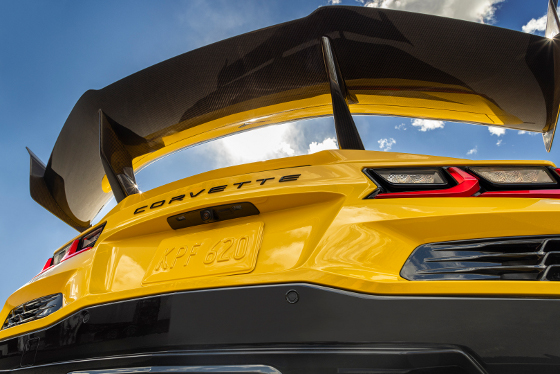
Last seen on the C2-generation Corvette, and quietly previewed on the Corvette Z06 GT3.R race car, the split-window style capitalizes on the design statement that is Corvette ZR1. While serving as a statement piece, this carbon fiber "spine" between the two rear windows, available in exposed weave or body color, provides increased heat extraction from the engine compartment, working in parallel with numerous other cooling elements throughout ZR1.
VIDEO: Corvette ZR1 insider look from designers.
The design teams worked to elevate this striking feature first revealed with the eighth-generation Corvette Stingray, choosing to accentuate lines that evoke the car's sense of motion. However, the design's function also helps it perform. Teams looked at every component of Corvette ZR1 to ensure cooling and aerodynamics remained top of mind, and any change accomplished the car's mission: performance.
Additional changes include:
- A carbon fiber roof to reduce mass and lower the center of gravity for both coupe and convertible;
- Unique aluminum wheel design available in four finishes, including Edge Blue (an homage to ZR1's signature color cue);
- Optional new carbon fiber wheel design, exclusive to ZR1, to further reduce mass; and
- LT7 engine intake finished in Edge Blue, which delivers an engine that looks as good as it performs.
The Corvette ZR1's cockpit revs up the attention to detail, notably with unique ZR1 badging found on an interior plaque, the sill plates, and steering wheel. A new finishing stitch pattern for the doors, specific to ZR1, is available on the 3LZ trim. A boost gauge is also present, denoting the first factory turbocharged Corvette in the nameplate's history.
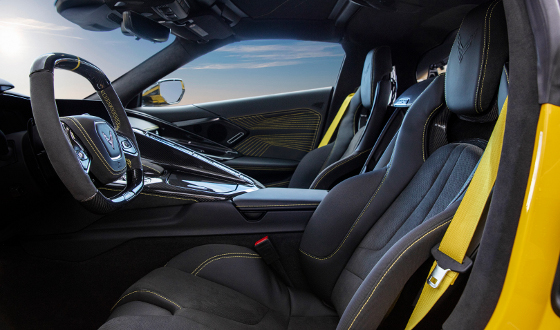
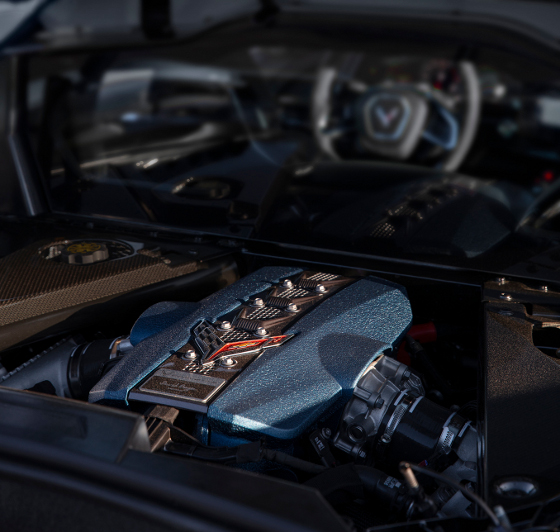
The Corvette ZR1 will provide a roster of customization between exterior and interior colors. Shared with the 2025 Corvette lineup, new colors such as Competition Yellow, Hysteria Purple, and Sebring Orange headline updates. The latter recalls a fan-favorite hue from the previous C7-generation Corvette ZR1.
Inside, a new Habanero interior is available, as is a Blue Stitch option. Various full-length racing stripes, brake caliper colors (including an exclusive blue for the calipers), seat belt colors, and more will also be available.
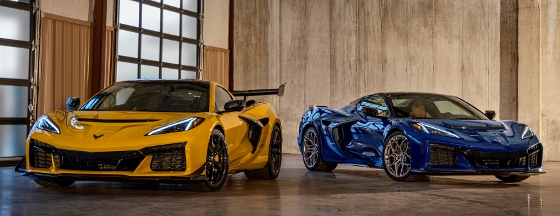
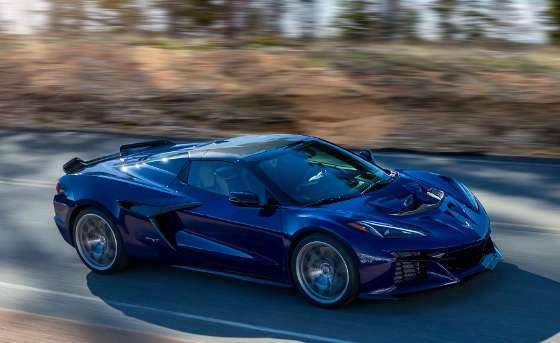
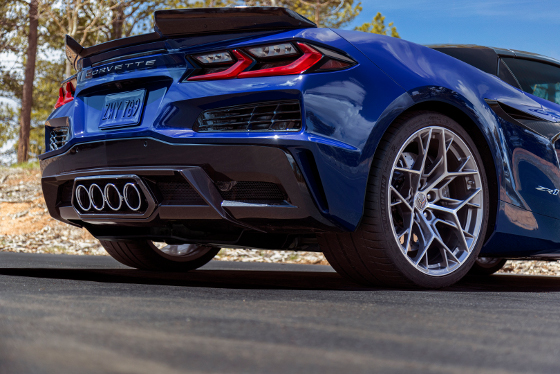
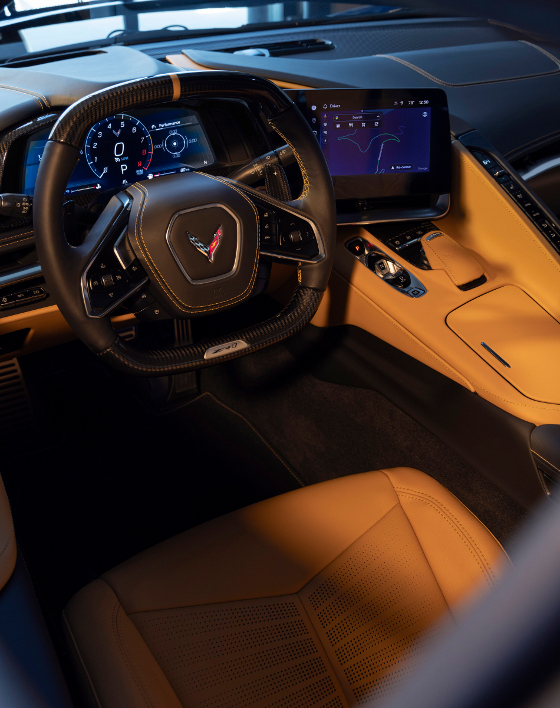
VIDEO: Corvette ZR1 full unveiling.
Corvette ZR1 will enter production in 2025. It will join the Corvette Stingray, Corvette Z06, and Corvette E-Ray in its family lineup. Pricing has not been released, not are there details yet on all the trim levels that will be available. Word on the street is ZR1 will start at $150,000+. Learn more at chevrolet.com/upcoming-vehicles/2025-corvette-zr1. You can sign up for updates on this page.
Source: Chevrolet
Published August 2024
Rate this article
View our terms of use and privacy policy
